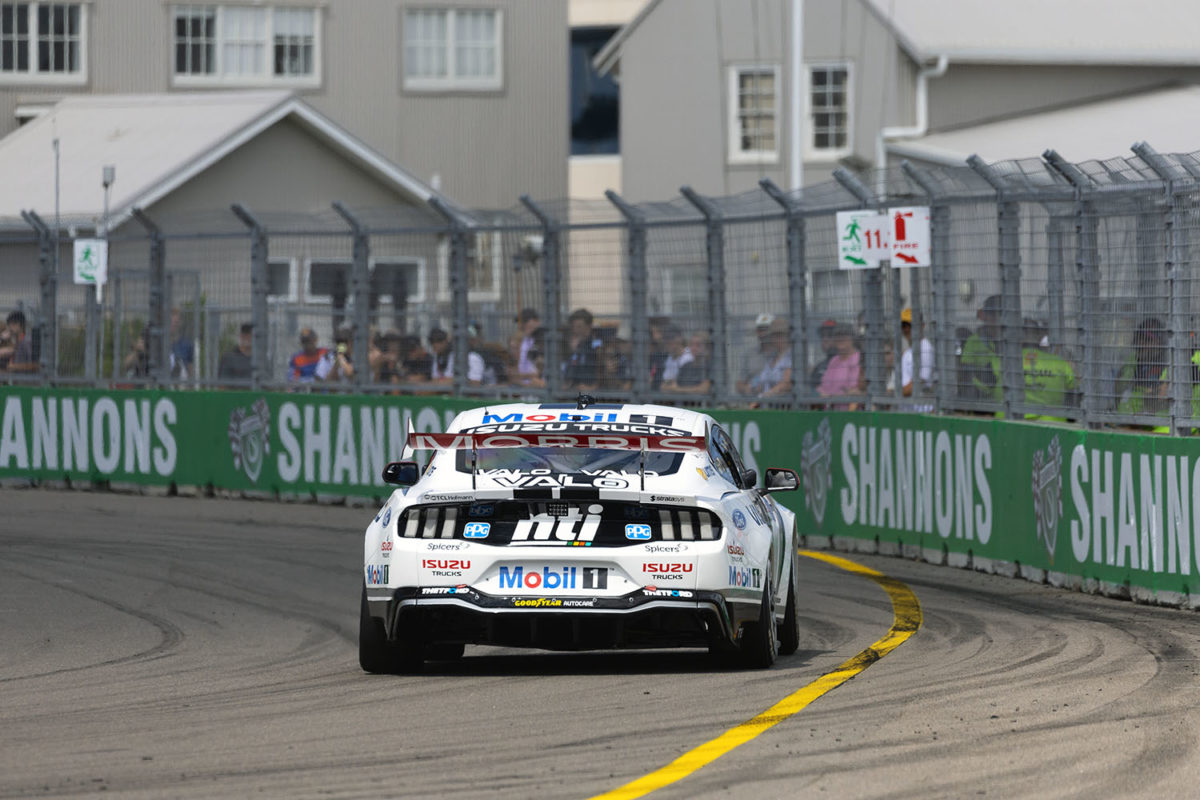

Supercars plans to change to air conditioning-style driver cooling in all Gen3 cars later this year as concerns about cockpit heat ramp up ahead of Saturday’s first race of the Thrifty Newcastle 500.
Amid an overnight move to add extra heat insulation, cool suits and helmet air ducting will be targeted for improvement and standardisation in time for potentially hot-house events at the tail end of the season.
Teams are using two different driver cooling methods at the Newcastle street circuit – conventional dry ice chilled water and air circulation or a sealed mini-aircon system.
At least half the field has adopted the ChillOut refrigeration unit pioneered in Supercars last year by Triple Eight and Erebus.
The sealed system uses refrigerated air to chill the water that circulates through the drivers’ cool suits, worn under their fire-resistant apparel.
The existing ChillOut device can’t supply cooled air to the drivers’ helmets, unlike the dry ice boxes, which feed chilled air through a tube connected to a duct on the top of the helmets.
Driver “air conditioning” that does away with dry ice containers was part of the Gen3 plan from the start, but across-the-board adoption was delayed as Supercars’ motor sport department grappled with more pressing technical concerns.
For the time being, teams have the option of sticking with their dry ice systems or adopting the ChillOut unit, which several teams have.
But Supercars head of motorsport, Adrian Burgess, has confirmed that the intention is to mandate a common sealed driver cooling device in all Gen3 cars later this year.
Burgess revealed that his group plans to revisit aircon-style refrigeration once Gen3’s mechanical package is fully bedded down.
He also divulged that the new control driver cooling system would be updated to include space for the generation of chilled air to be supplied to drivers’ helmets to further aid reducing driver fatigue during high ambient temperature races.
It’s understood that Supercars wants to get rid of dry ice coolers to further limit the release of extraneous material in the event of a serious crash.
The next potentially high-heat events are rounds five and six in Darwin and Townsville in the far north in June and July respectively.
A more likely target is towards the end of the season in time for the season-ending Gold Coast and Adelaide 500s, which are often events where drivers face heat stress in the races.
There are no reported concerns among drivers about the effectiveness of their cool suits in the hotter Gen3 cockpits despite complaints about searing footwell heat in Friday’s practice sessions at Newcastle, where the mercury is expected to climb to 30 degrees during Saturday’s 95-lap, 250km opening race.
Not all drivers used their cool suits during practice on Friday – and notably among the top three, pacesetter Brodie Kostecki ran uncooled.
Supercars allowed all teams to add insulation around the front firewall and exhaust outlets overnight in response to concerns expressed by some drivers, led by defending back-to-back champion Shane van Gisbergen.
Among the squads using ChillOut refrigeration units as well as Red Bull Ampol Racing and Coca-Cola Racing is convert Walkinshaw Andretti United.




















Discussion about this post